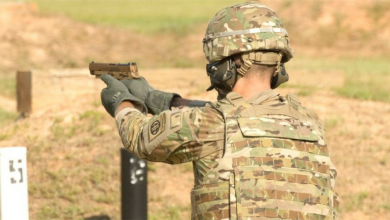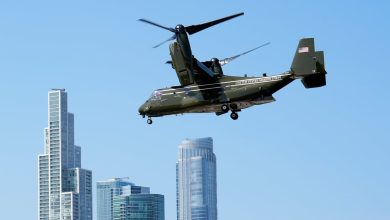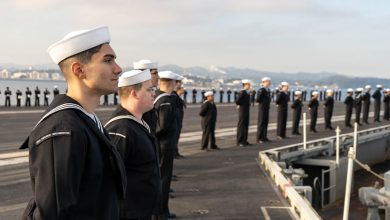What will the surge of US forces to the Middle East cost the military?
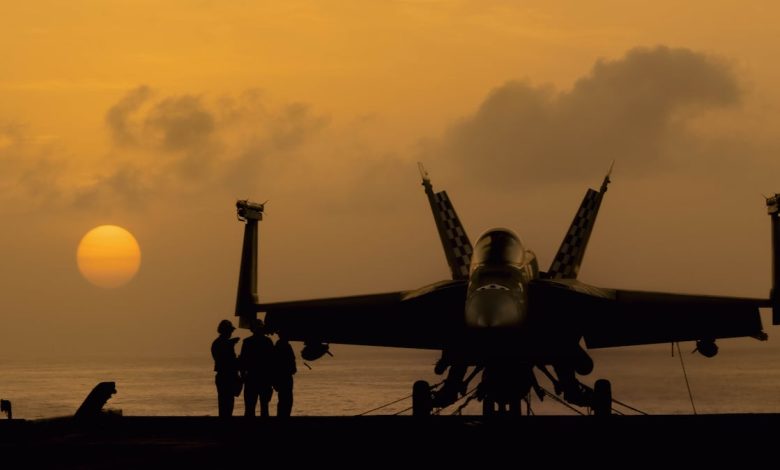
SUBIC BAY, PHILIPPINES — The day the Middle East almost erupted into a full regional war this summer, Lloyd Austin was touring an Asian shipyard.
Just before the defense secretary visited Subic Bay, Philippines, the former site of a massive U.S. Navy base, Israel killed the political leader of Hamas, who was visiting Iran.
Austin’s July visit was meant to show his focus on Asia, the region America says is its top priority. Instead, he ended the trip distracted by the Middle East, spending hours containing the crisis on a flight back to Washington.
“We’re going to do everything we can to make sure that we keep things from turning into a broader conflict,” Austin told reporters that day.
The U.S. military has spent much of the past year backing up that sentiment.
Since Oct. 7, when Hamas’ attack on Israel provoked all-out war in Gaza, the Pentagon has been on call. When the region has approached a wider war, the Defense Department surged forces there to calm it down. But after a year, some in Congress and the Pentagon are growing concerned about how to sustain that pace, and what it will cost the military in the long term.
Call it the U.S. Central Command squeeze. The Pentagon insists its surge has helped stop the Middle East from falling into chaos. But the longer the region borders on conflict, the more the U.S. tests its endurance for crises later on, most notably, a future conflict with China.
The pressure on the military increased even further this week. After their most intense attacks in almost 20 years, Israel and the Lebanese militia group Hezbollah are close to a larger war. On Monday, Austin yet again ordered more troops to the region, joining 40,000 other American personnel there, 6,000 more than normal. Another aircraft carrier may soon follow.
“We’re caught in this kind of never-ending quagmire of having to divert resources, and we’re burning [out] on the back end,” a senior congressional aide said.
This story is based on interviews with analysts, current and former defense officials and congressional staffers, many of whom were allowed to speak anonymously either because they weren’t permitted to talk to the press or because they were discussing sensitive topics.
Their message was that America’s military wouldn’t exhaust itself anytime soon, but that a year of unplanned deployments and spent missiles come with a cost. Even more, they said, the longer the crisis continues, the more the Pentagon will have to manage tradeoffs between the urgent needs of the Middle East and the rising challenges of the Indo-Pacific.
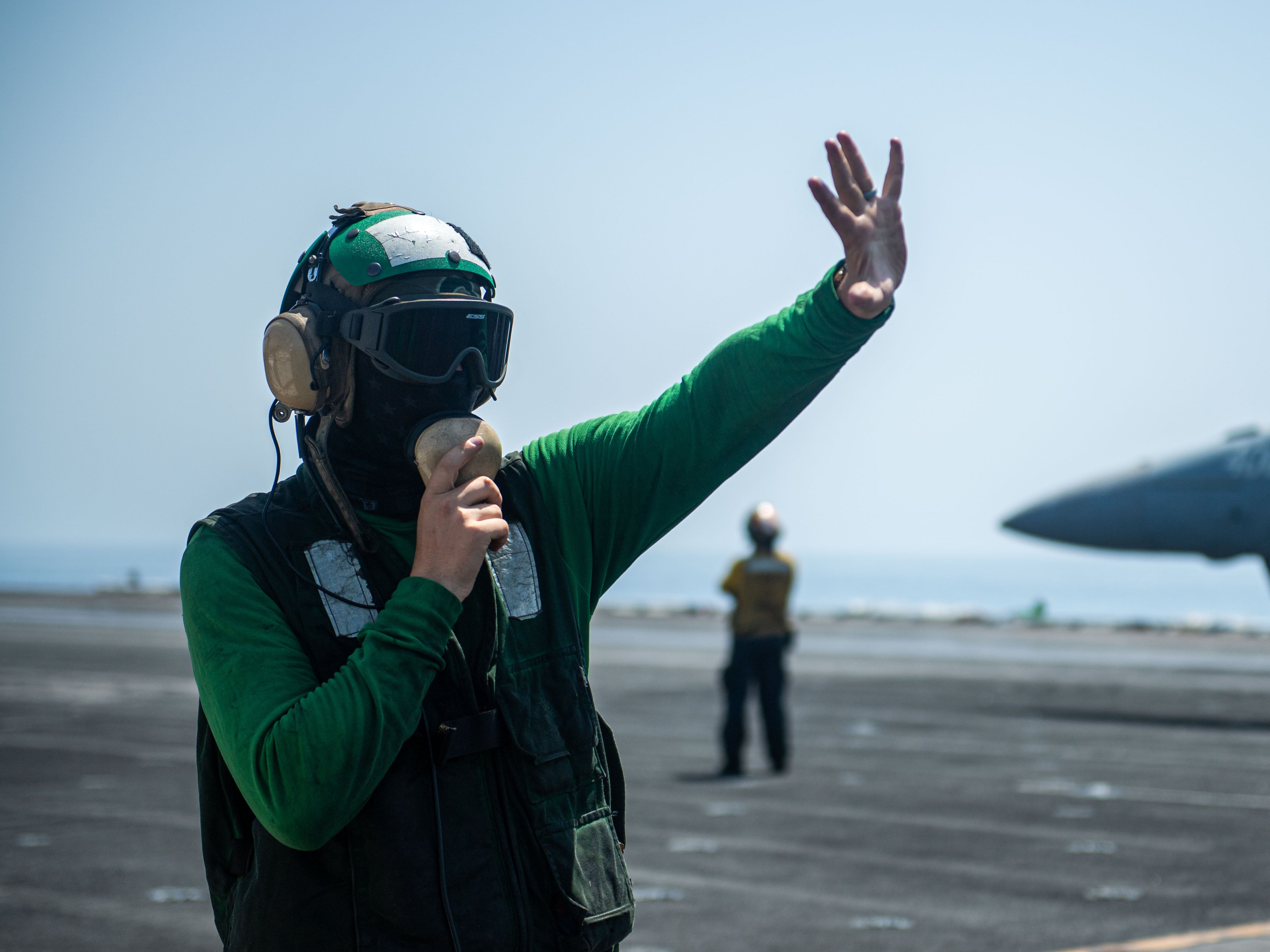
Merging
The way American military leaders in the Middle East describe it, they woke up to an entirely new world on Oct. 7.
For the last several years, the narrative around U.S. forces in the region had been one of decreased focus, with adversaries in the Europe and the Pacific taking priority.
That changed when Hamas fighters stormed into Israel, killing 1,200 and taking hundreds more hostage. For the short-term, at least, the U.S. was refocused on the Middle East.
“We didn’t know what this was the start of,” an American military official told Defense News. “We immediately started to go to worst-case planning.”
Within weeks of Oct. 7, in support of Israel, the U.S. sent two carrier strike groups, the Gerald R. Ford and the Dwight D. Eisenhower, to the Eastern Mediterranean Sea and Middle East. It doubled the number of Air Force fighter squadrons in CENTCOM. And to defend its forces already in the region, the Pentagon rushed valuable air defense batteries nearby.
“Our advice to those who might seek to exploit the situation or amplify the conflict is simple, don’t,” a senior U.S. defense official warned in an October press briefing.
This phrase, which became a cliché among senior members of the U.S. government, was still a clear statement of mission. America was sprinting to defend Israel and its own forces in the region.
That became harder the longer the war lasted. Oct. 7 brought direct attacks between Hamas and Israel, but it also upset a delicate balance among other groups.
Soon after the attack, Israel and Hezbollah — which has a formidable force, armed with over 130,000 rockets — started trading fire in a cycle of escalating skirmishes.
Militant groups armed by Iran started attacking Israeli and American forces, especially the 3,500 or so stationed between Iraq and Syria, with three soldiers dying in one such attack in January.
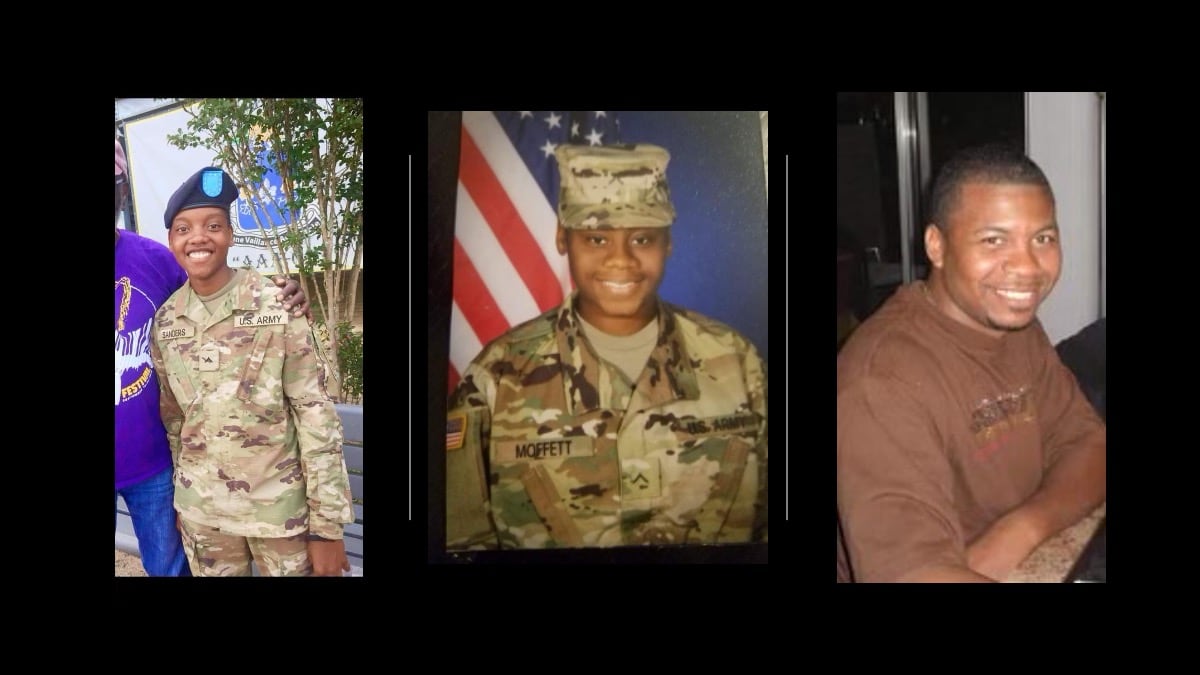
Meanwhile, the Houthis, a terrorist group in Yemen, started firing on commercial ships in the Red Sea, a vital economic waterway where 15% of global trade flowed before last fall.
The Navy’s running sea fight with the Houthis is the longest and most kinetic since World War II, according to service leaders.
“There’s flavors of all those activities in the past and previous rounds that I’ve been involved in, but I don’t recall a period when so many of them have merged,” said another senior U.S. defense official, describing the different attacks.
‘Bear the burden’
As the threats rose, so too did the demand on America’s military. By December, the U.S. began Operation Prosperity Guardian, a multinational mission to protect shipping in the Red Sea. It devoted an aircraft carrier and destroyers to the task.
In April, when Iran lobbed hundreds of missiles and drones at Israel, the U.S. and its partners helped intercept nearly all of them.
America’s national defense strategy accepts that its military can’t be everywhere in the numbers it would want. Instead, the plan is to have a movable force. Put more practically: the U.S. argues it can rush to contain crises like the Middle East after Oct. 7 while still deterring a conflict with China in the Indo-Pacific.
“That’s what we were saying before Oct. 7 and we just demonstrated it,” said Dana Stroul, a top Pentagon Middle East official until early this year. “It’s been a proof of concept.”
But the plan requires these emergencies to eventually end. Despite months of intense diplomacy in the region, the administration is now showing less confidence in its proposed ceasefire deal. And now Israel — the country America has spent the last year defending — may itself be opening a new front in the war against Hezbollah.
“You can’t employ diplomacy without the backbone of military capability,” said retired Gen. Frank McKenzie, who led CENTCOM until 2022. “Military capability without diplomatic messaging is not a good way to approach the problem either.”
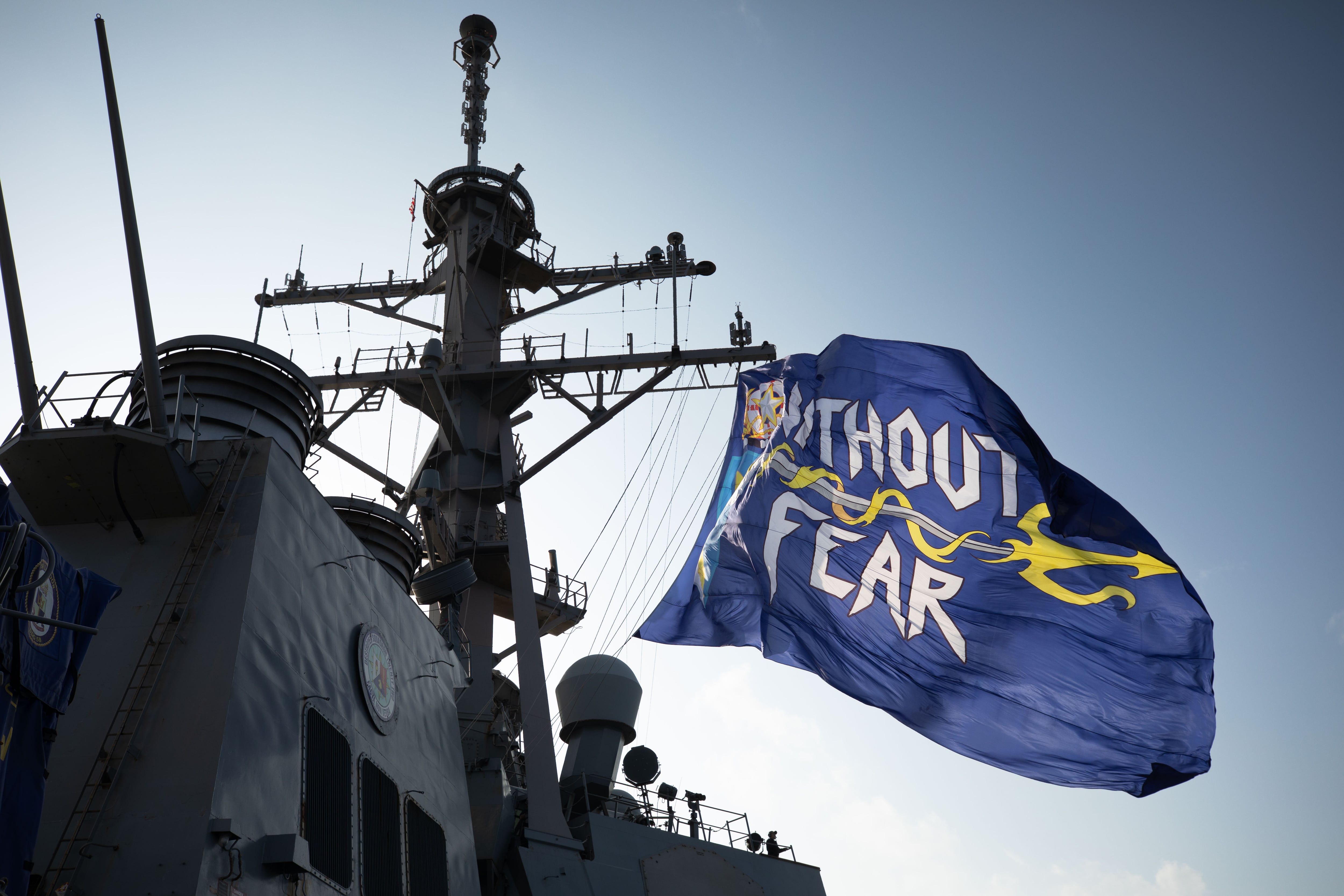
“You need both but you have to be willing to bear the burden,” he continued.
For some in Congress especially, the concern is that the Middle East is a distraction from the Indo-Pacific.
Pentagon leaders say they calculate the risk in pulling assets from one region to another, and that the choice to move forces away from Asia is a sign that they consider the region stable enough to do so.
Not everyone in the region is convinced.
“I have relayed messages that it is better to invest in deterrence where there is no overt conflict, rather than intervene in a conflict where there is one already,” the Philippines Secretary of Defense Gilberto Teodoro said in an August interview. He wouldn’t specify who in the U.S. those messages have reached.
[’We had mission and purpose:’ A chat with the CO of the USS Eisenhower]
Cost and benefit
The benefit, in the Defense Department’s eyes, of such a large response in the Middle East over the last year is to contain a crisis that threatened to engulf the entire region.
The periodic surges haven’t accomplished everything the U.S. has wanted. The Navy regularly intercepts Houthi drones and missiles, but the attacks by the Iran-backed group continue, and most shipping companies have chosen to reroute rather than risk becoming a target. Nor is it certain that the militia group will stop even if there is a ceasefire — something Pentagon officials say they still don’t know.
As the recent fire between Israel and Hezbollah has shown, the U.S. is also stuck responding to the rise and fall in the regional conflict, what Pentagon leaders often liken to riding a roller coaster.
“It’s obviously lasted longer than anyone would want,” the second defense official said.
That notwithstanding, there hasn’t yet been a wider war in the Middle East. And while it acknowledges other forces at work, the Pentagon says it’s helped avoid one.
RELATED
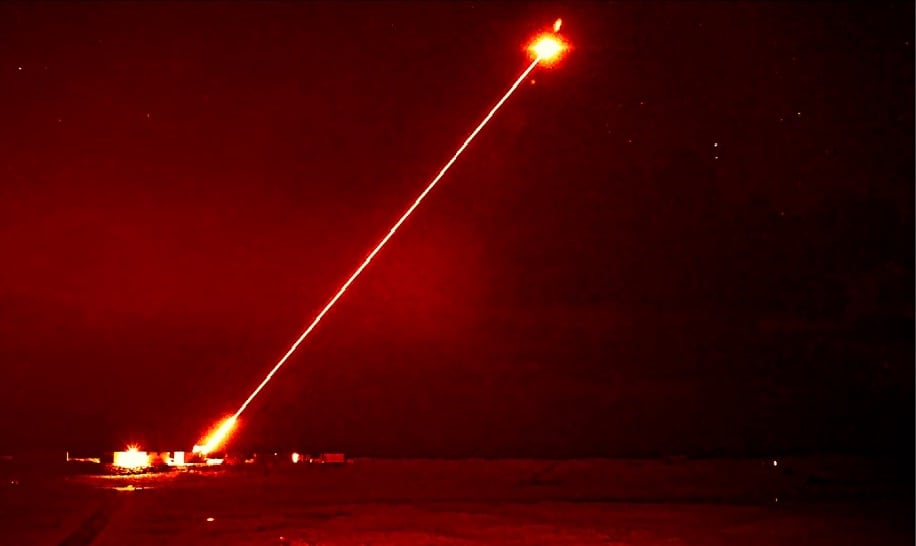
“The force posture does matter,” Secretary Austin told reporters this month. “In some cases, Iran can see … many of the capabilities that we have available. In many cases, they can’t.”
That said, the cost of this posture is also becoming clearer.
The first, and perhaps the most important, part of that tally is the military’s ability to meet future needs, known as “readiness” in defense jargon. By sending more forces to the Middle East, the Pentagon is accepting what amounts to a mortgage: higher costs on its forces to avoid an even bigger bill.
There’s no more pressing example of this trade than aircraft carriers.
These ships are the Navy’s most powerful, most visible weapon, and they’re a primary way the U.S. often flexes its military muscle.
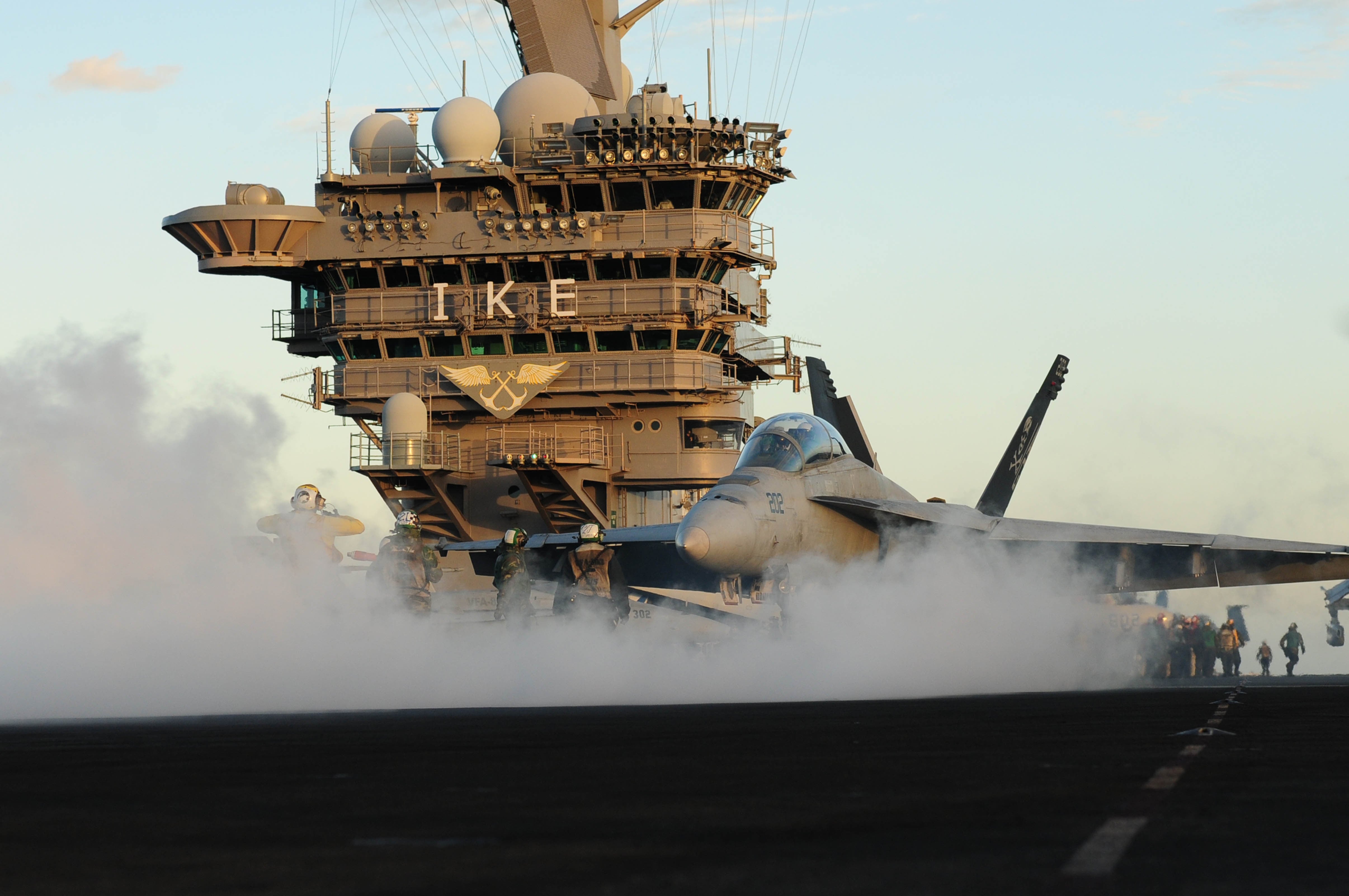
That said, carriers need a lot of maintenance, and spend about two-thirds of their life in port undergoing some kind of repair. The Navy calibrates their time at sea and their time for maintenance, allowing for some margin, but not much.
Central Command spent two years without a carrier after America left Afghanistan in 2021. But since Oct. 7, the U.S. has rotated four of them into the Middle East. Most of them have also been deployed longer than their scheduled seven months at sea.
“If we delay a carrier from going back into port and going back into a maintenance period by a month, it causes an even longer period” of disruption, the third defense official said. “It’s not a one-for-one delay.”
Without specifying the impact of these extensions so far, multiple defense officials and congressional aides said the U.S. is already having to manage “tradeoffs” between the needs of the Middle East today and other areas in the future.
Still, in an interview, the head of readiness for the Navy’s Fleet Forces Command, which oversees the East Coast-based fleet, argued that the schedules and ships themselves have proved resilient and aren’t yet showing higher wear.
“Sailing those ships in harm’s way for more months certainly will put stress on that, but I really don’t see that process breaking,” Rear Adm. Paul Lanzilotta said.
Close calls
This February, the Houthis shot a ballistic missile at the Navy destroyer Gravely in the Red Sea, one of many times the militia group targeted American ships in the waterway.
But this one came close. In fact, the ship used a short-range weapon — rather than the typical missile — to intercept the attack. The Houthis came within a nautical mile of success, according to Navy officials.
This is an example of the other two costs involved in the Pentagon’s response. One is to personnel, who are being targeted by militia groups more often and are, in some cases, being deployed longer than planned. The other is the military’s own weapons needed to respond.
The Navy estimates that between Oct. 7 and mid-July, it fired $1.16 billion worth of munitions while on station in the Red Sea.
Many of these are older versions of missiles — such as Tomahawks and Standard Missile 2 interceptors — that wouldn’t be as useful in a fight against China, said a second congressional aide.
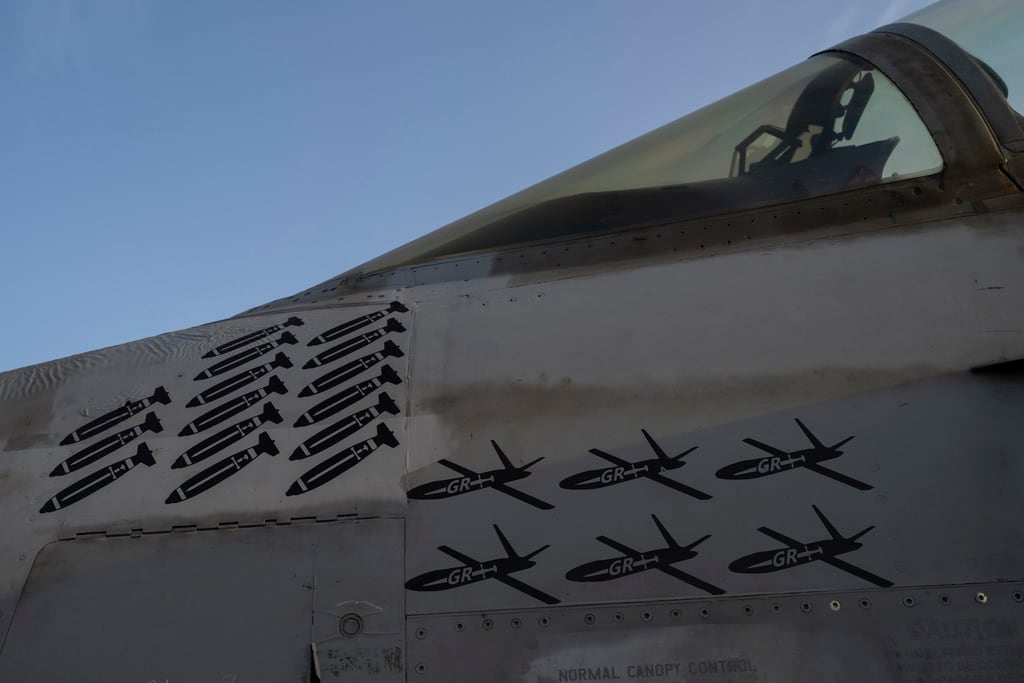
Still, as long as the Navy is around the Red Sea, it will need to fire weapons that cost more than what they’re shooting down — an equation known in the military as an “exchange ratio.” That deficit has fallen as the U.S. escorts fewer vessels and experiments more with other ways to stop these attacks, multiple officials and analysts told Defense News. But there’s only so many ways the military can adapt, and it won’t risk losing sailors or ships that cost billions.
“We’ve dodged disaster so far, but that doesn’t really mean it’s mission accomplished,” said a third congressional aide.
In April, Congress passed a $95 billion addition to the Pentagon budget, with $2.44 billion in extra money for Central Command. That funding was designed to last six months, according to the first congressional aide, which would mean it’s almost out today.
The Pentagon comptroller office declined to offer an estimate of how much more the surge in forces is costing and whether the Defense Department was still running a deficit to pay for it.
Multiple staffs in Congress said the bill for the last six months will be about the same number as in April: $2 to $3 billion.
Lawmakers can either pay the bill down in another supplemental or by folding the total into their overall defense spending bill, as the Senate did with $1.75 billion for Central Command. That said, lawmakers will soon start the year on a short-term budget called a continuing resolution, which freezes Pentagon spending at last year’s level.
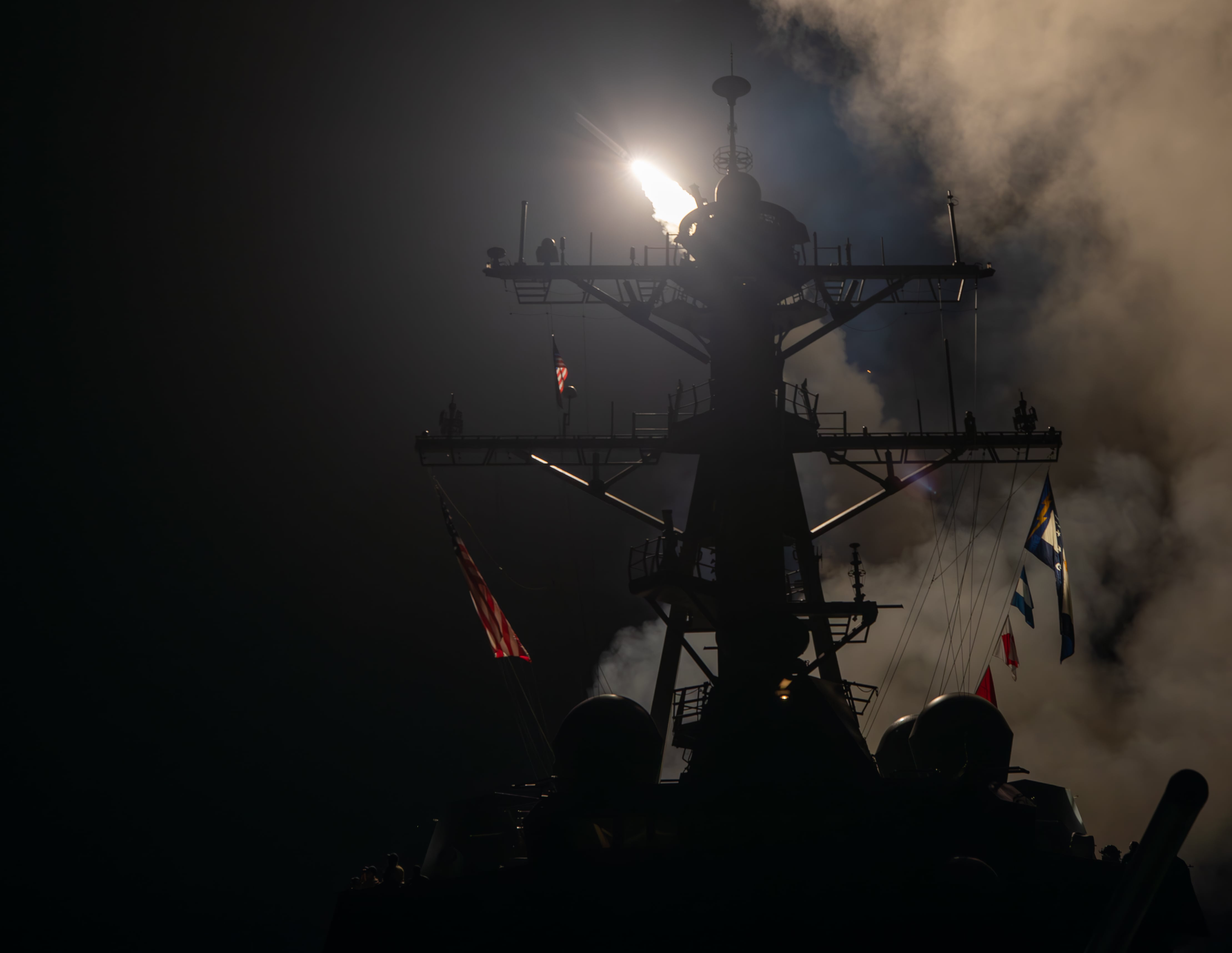
‘Still in the crisis’
Meanwhile even as funding runs out, the war in Gaza shows no sign of ending.
In August, after Austin returned to Washington from the Philippines, he sent a fighter squadron, a submarine, destroyers and a second aircraft carrier rerouted from the Indo-Pacific this year to CENTCOM. Iran didn’t attack, and Hezbollah’s response to an Israeli strike was limited. After a month and a half of relative calm, one of the two carriers in the region left.
During regular briefings, the Pentagon even started arguing that it had gotten in the “headspace” of Iran.
Then, earlier this month, Israel detonated thousands of devices belonging to Hezbollah and launched airstrikes in Lebanon — prompting the group to vow revenge. The two sides are now exchanging heavy fire across the border. Austin postponed a trip to Israel and Jordan this week, containing yet another flare up.
Between the Eastern Mediterranean Sea and CENTCOM, the U.S. now has at least one submarine, an aircraft carrier, three amphibious warships and nine destroyers, a defense official said. Two of those destroyers are in the Red Sea and were once slated to exit, the official said. After the attacks last week, the official continued, the Pentagon ordered them to stay.
In a call with reporters after Israel and Hezbollah’s latest standoff began, a senior administration official yet again said that the U.S. had helped avert a wider war and that a ceasefire was the best option for all in the region.
In the days after, Israel continued striking Lebanon killing hundreds in attacks that escalated their conflict further.
Another carrier strike group deployed for Europe this week on a previously scheduled deployment. The defense official said the Pentagon is drawing up plans in case it needs to divert into CENTCOM and transit the Red Sea.
“We very much will maintain that deterrent posture, because we are still in crisis,” the senior administration official said.
Noah Robertson is the Pentagon reporter at Defense News. He previously covered national security for the Christian Science Monitor. He holds a bachelor’s degree in English and government from the College of William & Mary in his hometown of Williamsburg, Virginia.
Read the full article here


